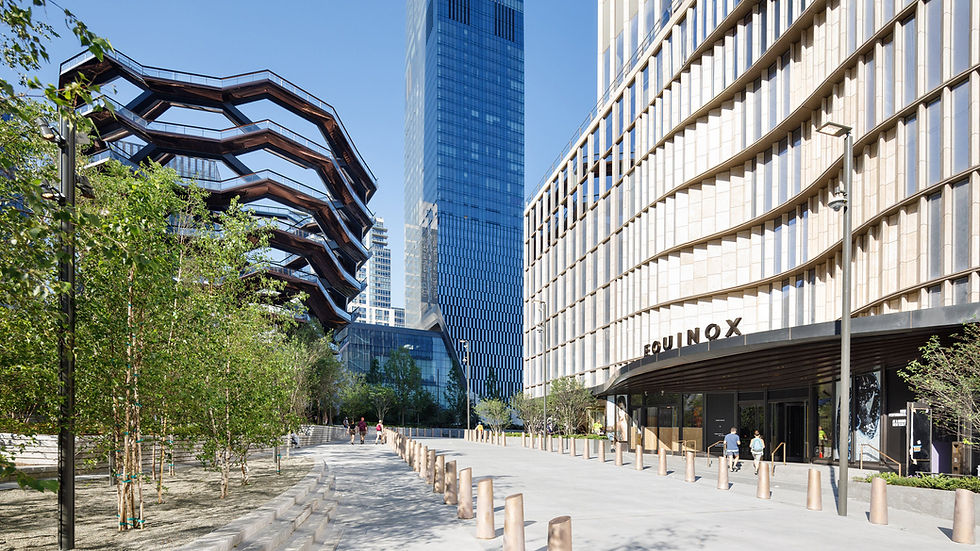Weekly Market Report - August 25, 2022
- Norman Bobrow

- Aug 24, 2022
- 4 min read
***
Manhattan’s office market continues its recovery in the second quarter of 2022. Office usage is on the upswing, and the borough’s availability rate rose by 0.2 percentage points to 17%, while absorption was positive at 1.09 million square feet. Employment in the area is on the rise, especially in the tech sector, while the average asking rent for Manhattan office space increased for the third consecutive quarter. Office leasing activity in Manhattan rose 42.8% in July, with more than 3 million square feet traded. By comparison, 2.2 million square feet of office space were leased during the previous month.
The Midtown Manhattan submarket was the busiest in terms of office leasing activity, with close to 2 million square feet of office space leased during the past month. By comparison, Midtown South recorded 707,630 square feet of leasing activity, while Downtown Manhattan recorded just 480,018 square feet of leasing activity. The office availability rate in Midtown decreased slightly from 16.4% in June to 16% in July. It also marked a significant drop year-over-year, from 17.5% in July 2021. Midtown South’s availability rate is higher than in 2021, hovering at 16.4% in July 2022. However, it did mark a slight decrease month-over-month.
In Downtown Manhattan, the office availability rate closed July at 20.1%; by comparison, the availability rate in this part of the city was 18.3% in July 2021. While increased leasing activity, rising asking rents, and longer lease terms are positive signs for Manhattan, the market remains in recovery mode, and remote work continues to be a trend for many office-using businesses. Supply has skyrocketed since the pandemic’s start, with Midtown recording a 39.1% increase in its office supply since March 2020. Midtown South doubled its supply, while Lower Manhattan’s increased by 97%.
***
KPMG said Tuesday that it signed a lease for 456,000 square feet and 12 floors at an office tower rising on Manhattan’s West Side in the new Hudson Yards neighborhood. The firm plans to vacate the roughly 800,000 square feet it currently occupies at three Midtown Manhattan office buildings that were built between the 1960s and ’80s. It expects to move in 2025 to Two Manhattan West, an under-construction skyscraper developed by Brookfield Properties. It will serve as KPMG’s new U.S. headquarters and represents one of the largest office lease signings in New York City this year. KPMG’s move is the latest sign that even as more workers gradually return to the office, hybrid and remote work appear here to stay.
Apple Inc. and Alphabet Inc.’s Google also said in recent months they were calling employees back to the workplace but would continue to allow some form of hybrid work. The KPMG deal also highlights the harsh new reality for the office sector. Companies are still willing to spend big on modern office space with more amenities, outdoor space and energy efficiency. But they often want far less of it. That leaves landlords with increasingly large holes to fill, especially in older buildings. After allowing employees to work remotely for the better part of two years, the company is now pursuing a hybrid-work strategy.
Employees are expected to gather at company or client offices on some days, but are otherwise free to work from home, Mr. Knopp said. That means KPMG needs far less office space in New York even as it plans to increase its head count while saving money on its New York City real estate costs. KPMG’s new office will feature more collaborative space and rooms equipped with technology that will make it easier for people to call into meetings. There will be fewer assigned desks and private offices.
***
Nine months after going public, WeWork in July officially launched a service named WeWork Workplace, which includes the software tools that WeWork has been using to power its scores of locations. For the first time, WeWork is now offering these tools to all tenants regardless of WeWork membership. WeWork executives say Workplace will help businesses lure workers back to offices by giving their employees an app with which they can do such things as book a conference room, post a company announcement or register for a yoga class.
WeWork isn’t alone in looking for new business opportunities in the upheaval in the office-space industry caused by the pandemic. Competitors also offering a range of apps, data, telecommunications and other software include technology companies such as Cisco Systems Inc. and Honeywell International Inc. and startups such as VTS and HqO. WeWork’s rollout of its workplace-software service marks the latest chapter in the saga of the company. WeWork shook up the office-space business in the years leading up to the pandemic, but a planned initial public offering in 2019 flopped spectacularly. Since then, a new management team has cut costs by shedding numerous leases.
Last October, WeWork went public through a merger with a special-purpose acquisition company. But the company’s stock, which hit a high of $13.18 in October, has fallen to under $5 a share partly because the company continues to operate at a loss and is still on the hook for a $2.4 billion load of debt, due in 2025. Some analysts don’t expect WeWork’s new workplace-software offering to be much help. But Piper Sandler’s senior real-estate-investment-trust analyst, Alexander Goldfarb, predicted that boosting building occupancy with new ventures such as WeWork Workplace and cutting cost margins help put WeWork on track to achieve positive cash flow in 2024.









Comments